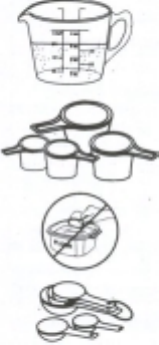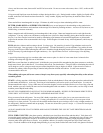
2
SAVE THESE INSTRUCTIONS
Your bread maker needs no special care other than cleaning. See Warranty section in this booklet for service details. Do not
attempt to repair it yourself. For Household Use Only.
An off odor from motor may be noted with first use, which is normal and will disappear with use.
Electric Cord Statement
CAUTION: Your bread maker has a short cord as a safety precaution to prevent personal injury or property damage resulting
from pulling, tripping or becoming entangled with the cord. Do not allow children to be near or use this bread maker without
close adult supervision. If you must use a longer cord set or an extension cord when using the bread maker, the cord must be
arranged so it will not drape or hang over the edge of a countertop, tabletop, or surface area where it can be pulled on by
children or tripped over. To prevent electric shock, personal injury or fire, the electrical rating of the extension cord you use
must be the same or more than the wattage of the bread maker (wattage is stamped on underside of bread maker).
Important Safety Instructions
This appliance has a polarized plug (one blade is wider than the other). As a safety feature, this plug will fit in a polarized
outlet only one way. If the plug does not fit fully in the outlet, reverse the plug. If it still does not fit, contact a qualified
electrician. Never use with an extension cord unless plug can be fully inserted. Do not attempt to defeat this safety feature.
Your West Bend® Bread & Dough Maker was designed for use with 120 volt, 60 Hz electrical service ONLY. Use of your
bread & dough maker with a converter or transformer will destroy the electronic control and will void your warranty.
‘QUICK START’ STEPS TO FOLLOW FOR MAKING THE FIRST LOAF OF BREAD
BREAD MAKING IN JUST 4 EASY STEPS
1. WHAT YOU WILL NEED
FOR MEASURING:
• See –through liquid measuring cup with graduated markings
• Set of solid, nesting type measuring cups for dry ingredients
• Set of measuring spoons
• Kitchen spoon
• Table knife
FOR MAKING BREAD:
• Milk
• Bread Flour
• Sugar
• Salt
• Butter or Margarine
• Active Dry Yeast
2. HOW TO MEASURE
Measuring ingredients the right way with the correct measuring cups and spoons is the most important step to follow when
making bread. See measuring section for more information.
Always measure liquid ingredients in see-through measuring cup with graduated markings.
Liquid should just reach marking on cup at “eye level”, not above or below. For easier measuring, set
cup on inside of top kitchen cabinet.
Always spoon dry ingredients, like bread flour, into solid, nesting type measuring cups, then level
off with table knife.
Never scoop measuring cups into dry ingredients as this will pack down the ingredients, causing
the dough to be dry and the loaf to be short.
Always use set of measuring spoons to measure smaller quantities of dry and liquid ingredients,
measuring level, not rounded or heaping.


















